Cows mounting
Cows and heifers in heat pose a danger to farmers and those working with them.
Cows tend to be out of character when in heat and are liable to do things they normally wouldn’t.
Never turn your back to bulling cows or heifers. 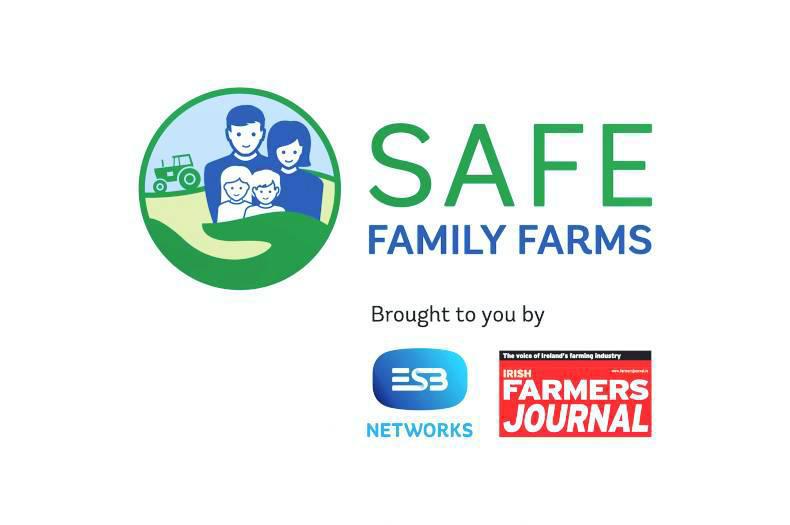
There have been cases where stock have tried to mount the farmer, leading to serious injury.
Be extra careful around yards and the milking parlour where cows are bulling, as they could slip or slide into gates and cause injury.
Electricity
There are a number of safety hazards with electricity use associated with the breeding season. Many farmers now use electronic straw thawers.
These heat the water that is used to thaw the straw to 37°C. Water and electricity are never a good combination, so make sure that all devices are in perfect working order and are plugged into an approved socket.

Jobs such as tail clipping and scanning require an electrical supply to operate devices, although many of these can now be battery operated, which are safer and easier to use.
But if you need an electrical supply near a crush area, consider getting an electrician to install a permanent weatherproof socket. If an extension lead has to be used, make sure it is fully rolled out, kept away from livestock and kept dry.
Liquid nitrogen
AI straws are stored in liquid nitrogen flasks at -200°C. Liquid nitrogen can cause cold burns if it comes into contact with skin. A liquid nitrogen spillage in a confined space is very serious, as it displaces oxygen and – like slurry gas – it can be a silent killer. Be careful when removing AI straws from the flask.
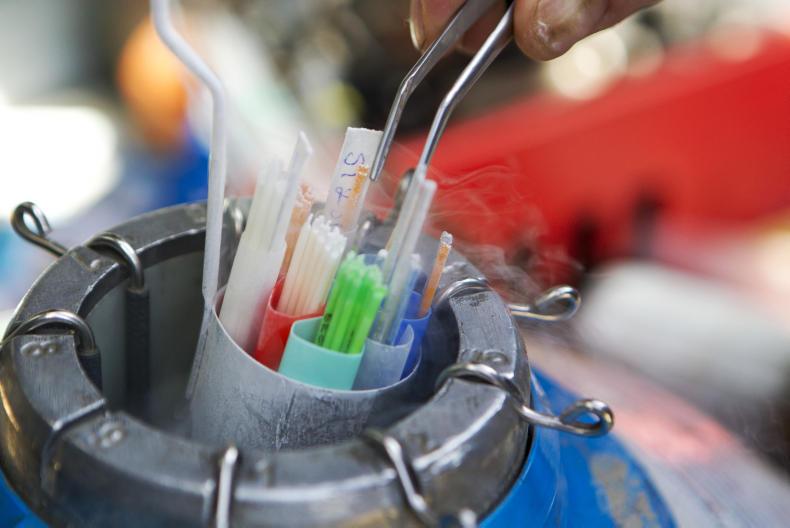
You can occasionally get a blank straw within a batch of straws. When taken out of the flask, the air in the blank straw expands and the top blows off the straw. You should always point AI straws away from your face and wear eye goggles when removing them from the flask to prevent injury.
Crush risks
Stock handling increases dramatically during the breeding season.
Between tail painting and AI, cows are handled countless times. The sheer volume of handling increases risks. Analyse your handling facilities for hazards.
Are gates and penning safe and secure? Many handling facilities, particularly on outfarms, are not up to scratch.
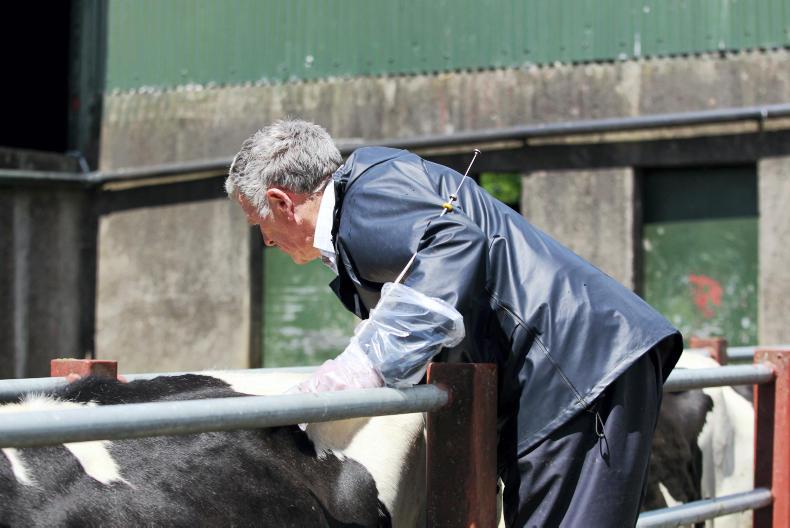
There should be a duty of care on the part of the farmer to provide a safe working environment for employees, the AI technician and vet who are working with stock on the farm.
Will facilities withstand the pressure from stock pushing up against them? If there is a risk, get it repaired or replaced – you never know who could get caught in a collapsing gate.
Be careful when handling cows, particularly of getting crushed when they come up from behind. Never enter the crush unless you can be protected by a crush gate that will stop cows from coming up behind.
Similarly, ensure cows’ heads are firmly secured in a head gate to prevent them from backing out and crushing the operator in a gate.
Beware of the bulls
Bulls are synonymous with the breeding season.
They also signal danger.
We all know the risks: bulls are temperamental and are a hazard.
They can become aggressive and attack people, thus they pose a risk to farmers and anyone else on the farm. Even so-called quiet bulls can become aggressive and attack.
So what can we do to reduce the dangers?
Bulls showing signs of aggression should be culled. There is no place on dairy farms for angry bulls, as the risks are just too great.
Some breeds tend to be more aggressive than others.
Many farmers find that older Holstein-Friesian bulls (in their second season) get very aggressive.
The beef breeds – such as Hereford and Angus – tend to be more placid, while Jersey bulls, despite their size, are probably the most aggressive.
The bottom line is that no bulls can be trusted.
A bull ring and a chain is a good safety device on every bull, as it helps to deter them from charging or running.
Some farmers use ropes but a chain is probably better. The chain should be long enough so that it drags along the ground.
When herding animals where bulls are present, always bring a tractor or other vehicle as a mobile sanctuary.
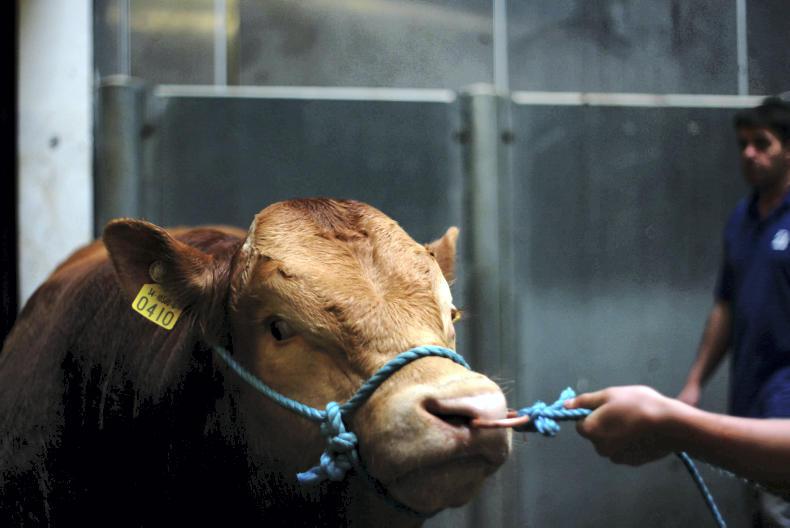
Bulls will naturally want to protect the herd and they can see the farmer or person as a threat.
Keep gates to fields where bulls are kept securely locked and alert the public to the dangers present, using notices on gates.
Be extra vigilant towards the autumn as bulls tend to become more dominant when breeding activity decreases.
Read more
More on Safe Family Farms
Getting the basics of sire selection right
How to secure your BDGP money
New online tool for bull buyers and sellers
What you need to be feeding autumn-calving suckler cows
What is the whole herd performance recording and what does it do?
Cows mounting
Cows and heifers in heat pose a danger to farmers and those working with them.
Cows tend to be out of character when in heat and are liable to do things they normally wouldn’t.
Never turn your back to bulling cows or heifers. 
There have been cases where stock have tried to mount the farmer, leading to serious injury.
Be extra careful around yards and the milking parlour where cows are bulling, as they could slip or slide into gates and cause injury.
Electricity
There are a number of safety hazards with electricity use associated with the breeding season. Many farmers now use electronic straw thawers.
These heat the water that is used to thaw the straw to 37°C. Water and electricity are never a good combination, so make sure that all devices are in perfect working order and are plugged into an approved socket.

Jobs such as tail clipping and scanning require an electrical supply to operate devices, although many of these can now be battery operated, which are safer and easier to use.
But if you need an electrical supply near a crush area, consider getting an electrician to install a permanent weatherproof socket. If an extension lead has to be used, make sure it is fully rolled out, kept away from livestock and kept dry.
Liquid nitrogen
AI straws are stored in liquid nitrogen flasks at -200°C. Liquid nitrogen can cause cold burns if it comes into contact with skin. A liquid nitrogen spillage in a confined space is very serious, as it displaces oxygen and – like slurry gas – it can be a silent killer. Be careful when removing AI straws from the flask.

You can occasionally get a blank straw within a batch of straws. When taken out of the flask, the air in the blank straw expands and the top blows off the straw. You should always point AI straws away from your face and wear eye goggles when removing them from the flask to prevent injury.
Crush risks
Stock handling increases dramatically during the breeding season.
Between tail painting and AI, cows are handled countless times. The sheer volume of handling increases risks. Analyse your handling facilities for hazards.
Are gates and penning safe and secure? Many handling facilities, particularly on outfarms, are not up to scratch.

There should be a duty of care on the part of the farmer to provide a safe working environment for employees, the AI technician and vet who are working with stock on the farm.
Will facilities withstand the pressure from stock pushing up against them? If there is a risk, get it repaired or replaced – you never know who could get caught in a collapsing gate.
Be careful when handling cows, particularly of getting crushed when they come up from behind. Never enter the crush unless you can be protected by a crush gate that will stop cows from coming up behind.
Similarly, ensure cows’ heads are firmly secured in a head gate to prevent them from backing out and crushing the operator in a gate.
Beware of the bulls
Bulls are synonymous with the breeding season.
They also signal danger.
We all know the risks: bulls are temperamental and are a hazard.
They can become aggressive and attack people, thus they pose a risk to farmers and anyone else on the farm. Even so-called quiet bulls can become aggressive and attack.
So what can we do to reduce the dangers?
Bulls showing signs of aggression should be culled. There is no place on dairy farms for angry bulls, as the risks are just too great.
Some breeds tend to be more aggressive than others.
Many farmers find that older Holstein-Friesian bulls (in their second season) get very aggressive.
The beef breeds – such as Hereford and Angus – tend to be more placid, while Jersey bulls, despite their size, are probably the most aggressive.
The bottom line is that no bulls can be trusted.
A bull ring and a chain is a good safety device on every bull, as it helps to deter them from charging or running.
Some farmers use ropes but a chain is probably better. The chain should be long enough so that it drags along the ground.
When herding animals where bulls are present, always bring a tractor or other vehicle as a mobile sanctuary.

Bulls will naturally want to protect the herd and they can see the farmer or person as a threat.
Keep gates to fields where bulls are kept securely locked and alert the public to the dangers present, using notices on gates.
Be extra vigilant towards the autumn as bulls tend to become more dominant when breeding activity decreases.
Read more
More on Safe Family Farms
Getting the basics of sire selection right
How to secure your BDGP money
New online tool for bull buyers and sellers
What you need to be feeding autumn-calving suckler cows
What is the whole herd performance recording and what does it do?













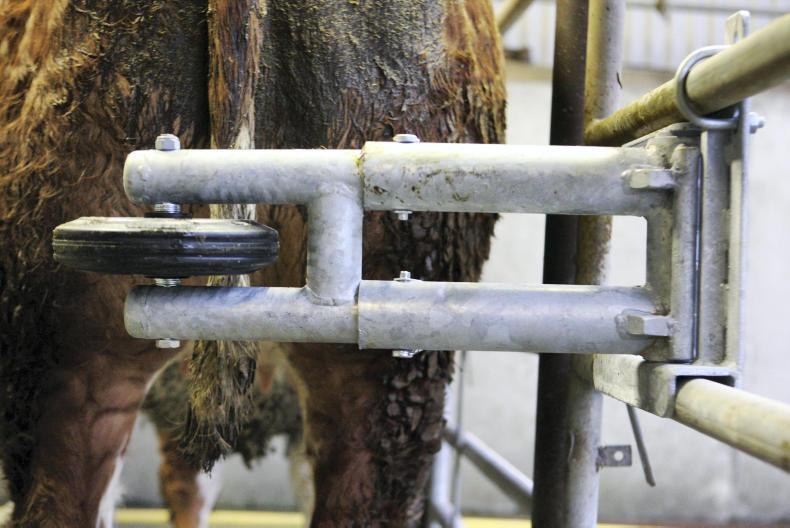


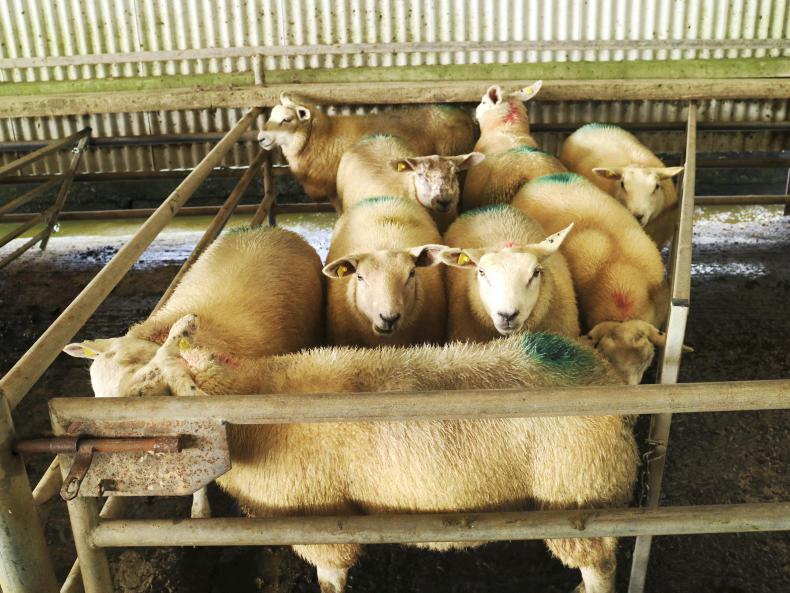

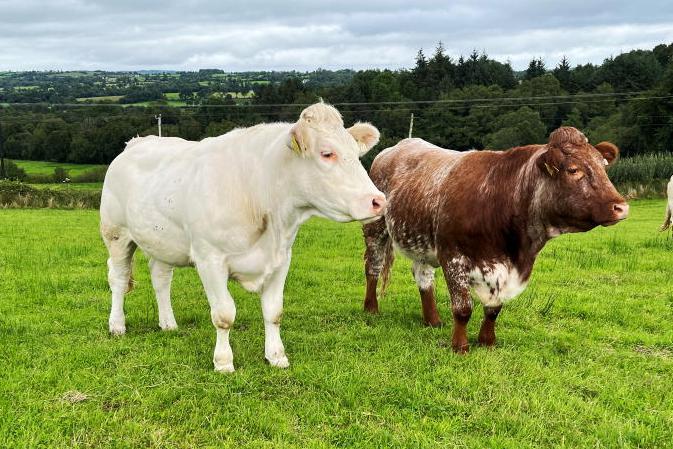
SHARING OPTIONS